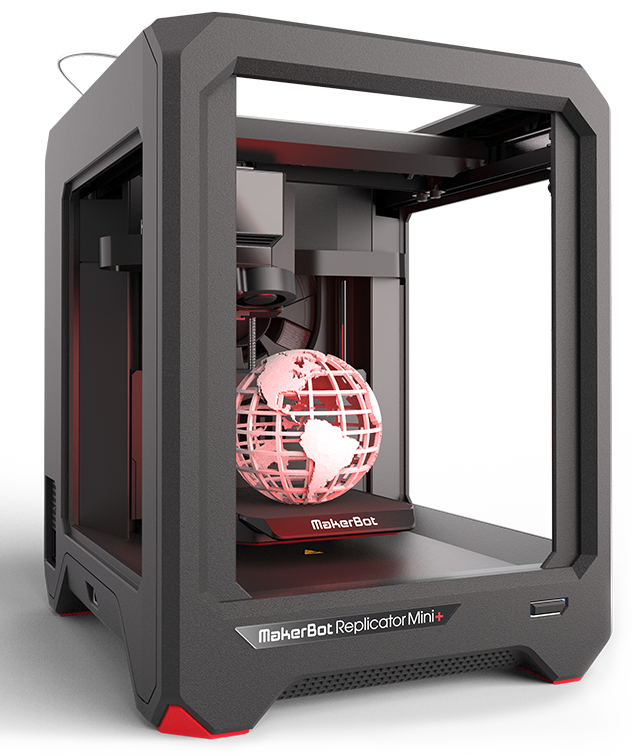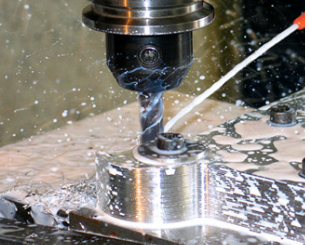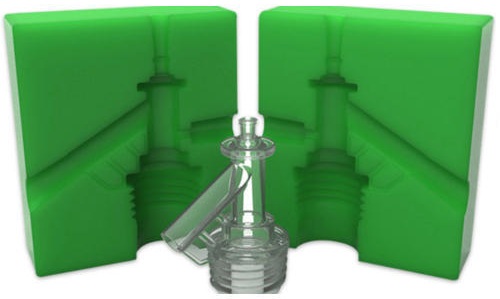We use Rapid prototyping for plastic parts to develop plastic parts quickly for Initial design verification and validation. Waiting for injection molded parts to verify part functional and aesthetic design can delay product design and can cause high tool modification costs.
Therefore industries always prefer to prototype plastic parts before manufacturing the final tooling. This article covers various plastic rapid prototyping techniques, their advantages, applications, and limitations.
Advantages of Rapid Prototyping Plastic Parts
Rapid Prototyping plastic parts before production has the following advantages:
- Verification of product aesthetics and function before final tooling.
- Prototypes reduce overall product development time and cost.
- Early user feedback.
- Tool modification cost reduces.
- Products are launched faster in the market.
Disadvantages of Rapid Prototyping
Along with so many advantages, rapid prototyping has the following limitations as well.
- Engineers can not 100% rely on rapid prototype parts test results.
- Low accuracy.
- You can not simulate structural design features such as Plastic snap, and mechanical fit on plastic prototypes.
- Good quality prototypes such as CNC machining cost is very high.
- Limited material options are available.
- The structural strength of prototype parts is not similar to injection molded parts.
Selection of Best Rapid Prototyping Process For Plastics
Various plastic prototyping techniques available in the market have their advantages and limitations. Here are the points you should consider before the selection of the plastic prototyping process.
- Product Functional and Aesthetic Requirements
- Prototyping Cost
- Lead Time
- Number of Prototypes Required
Plastic Rapid Prototyping Techniques
Following plastic prototyping methods are widely used to manufacture plastic parts quickly. Each process has its advantages and limitations.
- Additive manufacturing.
- CNC machined plastic parts.
- Vacuum casting
- Rapid injection mold tooling.
| Properties | 3D Printing | CNC Machining | Vacuum Casting | Rapid Tooling |
|---|---|---|---|---|
| Tooling Cost | Not Applicable | Very Low | High | |
| Unit Part Cost | Moderate | Very High | High | Low |
| Form and Fit | Good | Good (not better than CNC) | Excellent | |
| Functional | ||||
| Aesthetics | ||||
| Lead Time | Low (hours to days) | Moderate (3 to 7 days) | High (min 7 days) | Very high |
| Quantities | 1 to 50 | 1 to 10 | 10 to 100 | 100 to 2000 |
1. Additive Manufacturing (3D Printing)
Additive manufacturing or 3D printing is one of the fastest methods to manufacture plastic prototypes. In 3D printing, we manufacture plastic prototypes by adding successive layers of material. Each of these layers can be seen as a thinly sliced horizontal cross-section of the final part. Click this link!! to know the best available 3D printers.

Following 3D printing technologies are widely used for prototyping plastic parts. Each technique has its strengths and weaknesses.
- FDM (Fused deposition modelling)
- SLA (Stereolithography)
- DLP (Digital light processing)
- (SLS) Selective laser sintering
- Material jetting (PolyJet and multiJet printing)
- Metal printing (Selective laser melting and electron beam melting)
Advantages of Plastic Prototyping using 3D Printing
Following are the advantages of manufacturing rapid prototypes using 3D Printing:
- Various metals can also be 3D printed by utilizing metal 3D printing technologies.
- Parts with deep undercuts can be 3D printed.
- Specialized tooling is not required.
- Fast turnaround time.
Disadvantages of Plastic Prototyping using 3D Printing
Following are the disadvantages of manufacturing rapid prototypes using additive manufacturing.
- Moderate manufacturing cost and accuracy.
- Critical features are very difficult to manufacture.
- Limited Material options.
- Aesthetics are not good.
Key Features for Prototyping Plastic Parts using 3D Printing
| Parameter | Description |
|---|---|
| Material Options | 3D printing materials are also available in commercial-grade plastic. Using metal 3D Printing even metals like aluminum can also be 3D printed. |
| Engineering Tolerance | Depending on the 3D printer, part geometry, and material. Tolerance in the range of 50 to 150 microns can be achieved. |
| Cost and Lead time | Cost and lead time for 3D printed plastic prototypes very less compared to CNC machining prototypes. |
| Part Quality | Good Surface finish and strength can be achieved in 3D printed plastic prototypes. |
| Ideal Quantities | 1 to 20 Units |
2. CNC Machined Plastic Prototypes
CNC machining is a subtractive method to manufacture rapid plastic prototypes. Machines remove the material from the solid block using precision cutting tools during CNC machining.
CNC machined plastic prototypes need post-processing operations such as buffing, sandblasting, plating, painting, or screen printing to achieve the required part finish.

Advantages of Prototyping Plastic Parts using CNC Machining
Here are the advantages of rapid prototyping using CNC machining.
- Highly accurate and repeatable.
- Various material options are available.
- Customized tooling is not required.
- Fast turnaround time.
- Engineers can do functional testing on rapid plastic prototypes.
- Manufacturers use powder coating to achieve a premium aesthetic similar to molded parts.
Disadvantages of plastic part Prototyping using CNC Machining
Following are the limitations of rapid prototyping using CNC machining
- Not a good choice for large numbers because of high manufacturing costs.
- Manufacturers need to add critical features manually.
- Over molding or insert molding using CNC machining is not feasible.
Key Features of Plastic Prototyping using CNC Machining
| Parameter | Description |
|---|---|
| Material Options | ABS, PC, ABS+PC, HDPE, Nylon and Hard PVC etc. solid blocks are available for plastic part prototyping. |
| Engineering Tolerance | General tolerances " ISO-2768 m" is applicable for cnc machined plastic prototypes. |
| Cost and Lead time | Manufacturing cost is very high. Therefore they are recommended for small quantities. |
| Part Quality | CNC machined prototypes are functional and identical to injection molded parts. Validation tests can be done on CNC machined plastic prototypes. |
| Ideal Quantities | 1 to 20 Units |
3. Vacuum Casting / Silicone Rubber Mold
Polyurethane vacuum casting is used for manufacturing good quality and low volume prototypes using silicone molds. A masterpiece (generally 3D printed part) is required to develop the silicone mold.
For vacuum casting, the silicone mold is filled with two-part polyurethane resin inside the vacuum chamber and then processed in a heat chamber at a controlled temperature.

Advantages of Manufacturing Plastic Parts using Silicon Molding
Following are the advantages of rapid prototyping plastic parts using Silicone molding.
- Low unit part manufacturing cost.
- Various material options are available.
- Manufactured parts are closer to injection molded parts.
- Optically clear prototypes are also possible.
- Over molding and insert molding of plastic parts is also possible.
Limitations of Manufacturing Plastic Parts using Silicon Molding
Following are the limitations of rapid prototyping plastic parts using vacuum casting.
- Low accuracy.
- Slow manufacturing process results in long lead time.
Vacuum Casting Features
| Parameter | Description |
|---|---|
| Material Options | Commercial grade injection molding thermoplastics equivalent materials are available. |
| Engineering Tolerance | Tight tolerance are very difficult to achieve in vacuum casting plastic prototypes. Depending on part feature, tolerance in the range of 100 to 150 microns can be achieved. |
| Cost and Lead time | Silicon molding is more economical if manufactured in the multiples of 10 to 15. |
| Part Quality | Silicon molded plastic prototypes are functionally and aesthetically more close to injection molded plastic parts. |
| Ideal Quantities | 10 to 100 Units |
4. Rapid Tooling For Plastic Parts
Quick turn injection molds are a good choice for moderate prototype quantities. Sometimes they are also known as intermediate tools. Following technologies are used to manufacture a rapid tool.
- 3D printed plastic injection molds.
- Machined aluminum injection molds.
- 3D printed metal injection molds.
Advantages of Manufacturing Plastic Prototypes using Rapid Tooling
Following are the advantages of rapid prototyping plastic parts using rapid tooling.
- Low part manufacturing cost.
- Quick turnaround time compared to final tooling.
- Manufactured prototypes are functionally equivalent to injection molded parts.
- Over-molding and insert molding are feasible.
Limitations of Manufacturing Plastic Prototypes using Rapid Tooling
Following are the limitations of rapid prototyping plastic parts using rapid tooling.
- High lead time compared to 3D printing and CNC machining.
- High tooling cost.
- Recommended for moderate quantities only.
Features of Rapid Plastic Tooling
| Parameter | Description |
|---|---|
| Material Options | Most of thermoplastic materials can be injection molded. |
| Engineering Tolerance | Tight tolerances can be achieved using rapid tooling. |
| Cost and Lead time | Compared to silicone molding, initial Investment cost for rapid tools is very high. Rapid tooling lead time is approximate 2 to 3 weeks. |
| Part Quality | Rapid tooling prototypes are identical to injection molded parts. The only difference between rapid tool and final tool is the material used for tooling. |
| Ideal Quantities | 100 to 5000 Units (Depends on Material Used) |
We will keep adding more information on various plastic prototyping techniques. Please add your suggestions, comments, or questions on rapid plastic prototyping techniques in the comment box.

Add a Comment